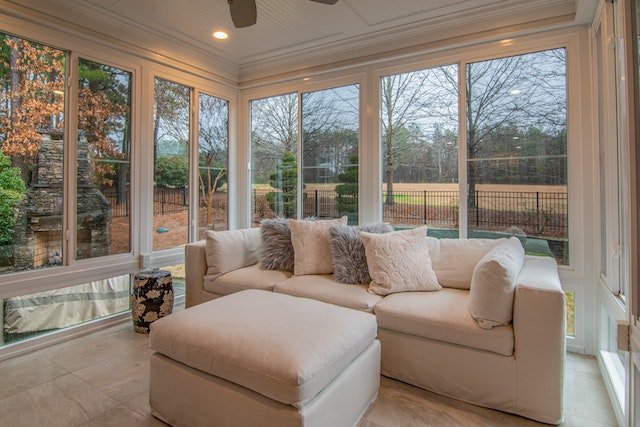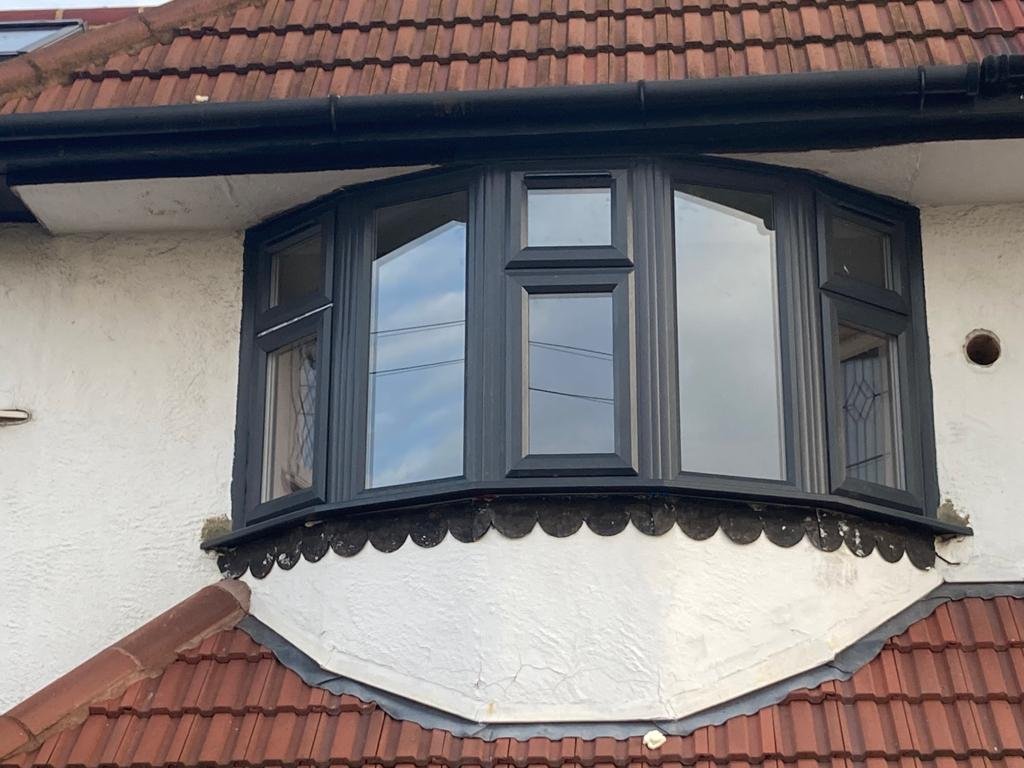Whether you have UPVC windows or Aluminium Windows, and whether it is double glazing, triple glazing or acoustic glazing, brand new windows are an excellent investment for any homeowner in 2025, as they offer a range of benefits, including noise reduction, energy efficiency and improved security. However, one issue that many people experience with windows, even brand new ones, is condensation. It can be unsightly, annoying, and even gradually damaging if left untreated.
Even for windows manufactured in 2025, which are usually incorporated with the latest technology, it is not unusual for homeowners to experience condensation. Condensation on double, triple or acoustic glazing windows comes in various forms, and understanding the distinct types is crucial for effective resolution.
Without doubt, condensation is probably the most common type of problem that homeowners face. So, what causes condensation on double glazing windows? There are several factors that can contribute to this problem and each factor will be associated with the specific type of condensation. There is a widespread misconception amongst homeowners about condensation on windows; most homeowners may think that replacing older windows with brand new windows, whether in aluminium or UPVC, will resolve condensation issues. However, this is not necessarily true under all circumstances. In fact, although you may have replaced your windows recently, condensation issues may remain if other factors have not changed.
With this in mind, there are three types of condensation on windows:
- Interior condensation;
- Exterior condensation, and;
- Condensation between the two panes of glass.
1) Interior condensation
The most common type of condensation occurs on the inside of the window when warm indoor air meets the colder surface of the glass i.e. temperature difference. This interaction causes moisture to condense and form droplets. Interior condensation is often a result of temperature differences and inadequate ventilation within the home.
This is why condensation is more common in the winter months when the temperature outside is lower and/or when there isn’t enough airflow in the room. Moisture can build up and cause condensation to form. This is why it’s essential to open windows regularly, especially in rooms where there is a lot of moisture, such as bathrooms and kitchens (yes, I know it get’s a bit cold, sorry). This is the best practice to overcome the issue of interior condensation.
There may be situations where some windows in the same property get condensation and some windows don’t. This is perfectly normal. Even if you have replaced your windows recently and getting interior condensation on a particular window it means your window is doing its job i.e. keeping the cold out and maintaining its efficiency. If the other window is not producing interior condensation then that is also normal and it does not necessarily mean it’s not working. This happens usually because there may be a temperature drop more on one window and less on the other and the difference in 0.5 degree of temperature or outside humidity may affect the windows. Furthermore, the floor height, facing direction (north, east, south, west) and trees, traffic or other material factors affecting the immediate surrounding of the window may cause more interior condensation on one window and not on another.
If, for any reason, you don’t or cannot open the windows, a quick remedy is to wipe the windows with a cloth, which will remove the moisture temporarily. However, this won’t solve the underlying problem, and the condensation is likely to return. The best practice is as mentioned above i.e. to open the windows regularly. If left unaddressed for longer periods, it can lead to issues like mould growth, deterioration of window frames, and potential harm to surrounding structures such as walls, window boards and curtains etc.
2) Exterior condensation
Exterior condensation manifests on the outside surface of the window and typically occurs during temperature drops, such as early mornings or evenings. Unlike interior condensation, exterior condensation is a natural and harmless outcome of temperature fluctuations. Distinguishing between the two is simple; if the condensation can be felt on the outside when touched (your hands get wet!), it is exterior condensation and generally poses no threat to the window’s integrity.
Again, just like interior condensation, you may experience exterior condensation on one window but not another due to a number of reasons.
3) Condensation between the panes
Another type of condensation occurs between the two panes of glass within the double glazing unit. This usually indicates a more serious issue, such as a compromised seal that allows moisture to penetrate the space between the glass layers. Condensation between panes not only obstructs visibility but can also signal a breach in the window’s structural integrity, potentially leading to reduced energy efficiency. Addressing this type of condensation may require professional intervention to assess and replacement of the entire double glazing unit.
If your windows start to get condensation between the glass panes, then it means the glazing unit is failing.
Glass units fail because of one of 2 reasons; either the lifetime of the particular glass unit has come to an end, which is usually the case for older glass units, or the glass unit has been fabricated improperly, which may be the case if you have replaced your windows recently (i.e. within 5 years).
The lifetime of a double, triple or acoustic glazing unit is minimum 5 years. However, they usually last a lot longer than this, typically up to 10 or even 15 years. Just like a living species the lifetime of each and every glass unit will vary; some glass units will naturally die out before others. If however, your glazing unit starts to produce condensation between the panes of glass within 5 years you should speak to your window installer to get a replacement under guarantee, which is usually no less than 5 years.
In 2025 it is common for glass units to be manufactured with 2 main features; low-e film and krypton/argon gas, Whilst we won’t delve into the specifics of these features in this article, it is worth noting that a failed glass means the argon gas inside the glass unit has leaked and allowing air to penetrate inside (blown), thereby creating condensation in between the two glass panes. Unfortunately, the blown glass unit needs to be repaired or replaced for it to work efficiently and save energy within the home.
find out more about low-e and argon gas in this article.
Solution & Conclusion
As you see, even in 2025 where window and glass technology has significantly improved, it does not do away with the problem of condensation.
Understanding these distinctions is vital for homeowners to determine the severity of the condensation issue and take appropriate measures. Improving overall ventilation and reducing amount of moisture in the air, avoiding activities such as drying clothes indoors, using sufficient dehumidifiers, and regular maintenance can mitigate the impact of interior condensation. Exterior condensation, on the other hand, is typically benign and requires no immediate action.
For condensation between panes, seeking professional advice is advisable to address any underlying structural concerns and maintain the optimal performance of the double glazing. By being aware of these three types of condensation, homeowners can tailor their approach to ensure the longevity and effectiveness of their double glazing investment.
In conclusion, condensation on double glazing windows is a common issue that many homeowners face. It can be unsightly, annoying, and even damaging if left untreated. However, by understanding the causes of condensation and taking steps to reduce moisture in the air, you can prevent it from forming in the first place. And if you do have condensation on your windows, there are solutions available to help you remove it and prevent it from returning.
For further technical information read more from one of the worlds largest glass manufacturer, Guardian Glass. Click here to download their brochure which outlines the technical features of condensation on glass units.
















